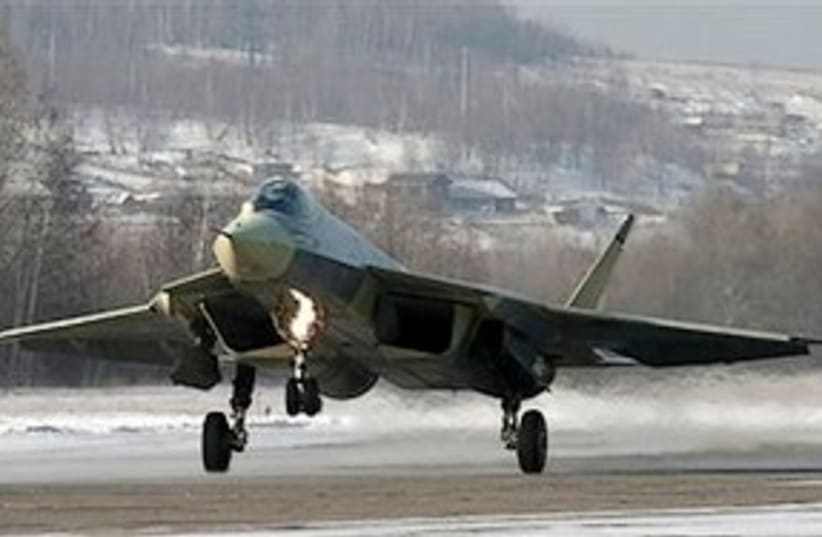Russia's first stealth fighter intendedto match the latest US design made its maiden flightFriday, boosting the country's efforts to modernize its rusting Soviet-builtarsenals and retain its lucrative export market.
The Sukhoi T-50's flight comes nearly two decadesafter the first prototype of the US F-22 Raptor tookto the air, and Russian officials said it will take another five years for thenew jet to enter service. Still, the flight marked a major step in 'sefforts to burnish the faded glory of its aviation industries and strengthen abeleaguered military.
The sleek twin-engined jet closely resembling the Raptor flew for 47-minutesfrom an airfield at Sukhoi's production plant in the Far Eastern city of onFriday. Development of the so-called fifth-generation fighter has been veiledin secrecy and no images of it had been released before the flight.
Russian Prime MinisterVladimir Putin hailed the flight as a "big stepforward," but admitted that "a lot remains to be done in terms ofengines and armament."
Craig Caffrey, an analyst for Jane's Defense Procurement-Military Aircraft,said the new fighter is "hugely important," both for modernizing theaging Russian air force fleet and retaining export markets.
"The T-50 should offer the Russian Air Force a significant boost in itscapabilities and ensure that it remains one of the best equipped air forces inthe world," he told The Associated Press by e-mail.
Caffrey said the new fighter will attract many foreign customers. "Forthose countries that don't traditionally purchase military equipment from the it will bethe only fifth generation aircraft available," he said.
The NPO Saturn companysaid in a statement that the jet has new engines, but military analystssuggested that they were a slightly modernized version of the Soviet-era enginepowering the Su-27 family of fighters.
"It's a humbug," said independent military analyst Pavel Felgenhauer. "It's just a prototypelacking new engines and a new radar. It takes new materials to build afifth-generation fighter, and lacks them."
Putin said Friday the first batch of new fighters is set to enter an AirForce evaluation unit in 2013 and serial production is set to begin in 2015.
Caffrey said the task looks "very challenging, given the amount of newtechnology that is being incorporated into the new aircraft."
Russian military analysts were also skeptical, pointing at a history ofdelays in the program and other Russian weapons projects.
"The schedule will likely be pushed back as usual," said Alexander Konovalov,the head of the Moscow-based, an independentthink tank.
's prospectiveBulava intercontinentalballistic missile has failed in at least eight of its 12 testlaunches, dealing a blow to 'shopes of making it a cornerstone of its nuclear arsenal. Officials have blamedthe failures on manufacturing flaws resulting from post-Soviet industrialdegradation.
Felgenhauer and other observers said the fighter program, which depends onhundreds of subcontractors, has been dogged by similar problems.
Russian officials have said the new fighter, like the Raptor, will havesupersonic cruising speed and stealth capabilities. Its pilot, Sergei Bogdan,said in televised remarks that it was easy and pleasant to fly.
While officials saw the new fighter as essential, some analysts said thecountry has more pressing needs.
"There is no mission and no adversary for such plane," Konovalovsaid, adding that the Russian military lacks a modern communications system and satellitenavigation. "It would be more expedient to fit modern avionics to oldergeneration jets."
The administration decided to quit buying the F-22 Raptor, the world's most expensive fighter jetat more than $140 million apiece, effectively capping its production at the 186already ordered.
